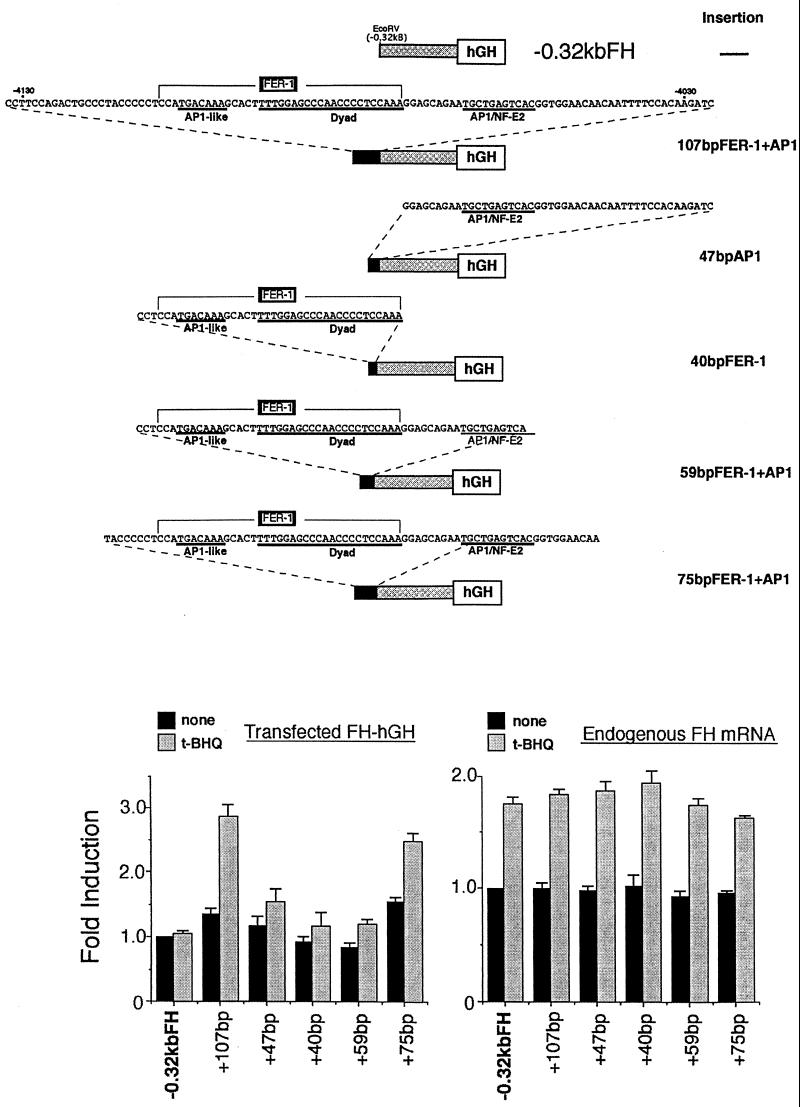FIG. 3.
The 75-bp cis-acting element responsible for transcriptional activation of the mouse ferritin H gene by H2O2 or t-BHQ contains the FER-1 element and an AP1/NF-E2 site. (Top) Schematic representation of ferritin H-hGH constructs used in this experiment. The cis-acting region in response to H2O2 or t-BHQ was dissected into various pieces, which were inserted into the EcoRV site of −0.32kbFHhGH. −0.32kbFHhGH contains 0.32 kb of 5′-flanking region of the ferritin H gene fused to the hGH reporter gene. 107bpFER-1+AP1 contains the entire cis-acting region (nucleotides −4132 to −4026) defined by the experiments in Fig. 2. 47bpAP1 contains a AP1/NF-E2 site (nucleotides −4072 to −4026). 40bpFER-1 contains the complete FER-1 element (nucleotides −4112 to −4073). 59bpFER-1+AP1 contains the complete FER-1 element plus the AP1/NF-E2 site (nucleotides −4112 to −4054). 75bpFER-1+AP1 contains the complete FER-1 element plus the AP1/NF-E2 site (nucleotides −4117 to −4043). (Bottom) A 15-μg portion of each hGH construct was transiently transfected into Hepa1-6 cells. After 36 to 40 h, the cells were treated with 100 μM t-BHQ for 8 to 10 h. A 10-μg portion of total RNA isolated from each sample was subjected to RNase protection assays to analyze the expression of transfected ferritin H-hGH and endogenous ferritin H mRNA simultaneously. Each transfected and endogenous ferritin H band in the cells transfected with −0.32kbFHhGH without treatment was defined as 1.0. The results from four independent experiments and standard errors are shown.

